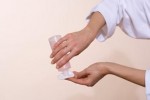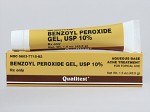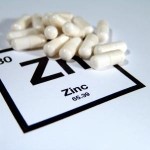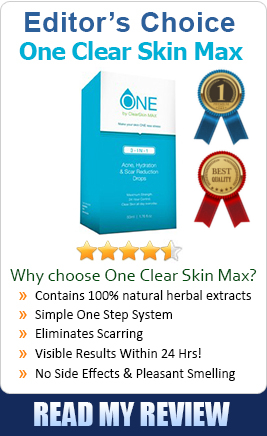This article sees through the eyes of a professional dermatologist who has massive experiences in treating and curing adult acne patients. He brings you some of the best practices imposed by many dermatologists around the world and also some of the short comings of a few of the treatments. Enjoy reading it and get educated!
Every month I see hundreds of teenagers who are battling their way through a desperate fight that, for some, will last all their teen years and even beyond. That fight occurs as nature starts to create for them supple, adult skin lubricated and be ready for the rest of their lives.
I’ve always felt it a shame that most people fail to realize how important a teenager’s face is to him or her. Is it possible that they forget the struggles of being a teenager? I guess so, because day after day I see kids who won’t talk, won’t socialize, and won’t even look at me sometimes, because they’re so ashamed of their appearance.
In fact, I’m sure that acne is one reason why I’m so dedicated to dermatology. As faces clear, I often see personalities blossom on subsequent office visits just like time-lapse pictures of an opening rose. What a delightful experience for a physician to see children climb out of the sadness that is acne.
The real problem with acne is delay – delay in talking over the situation with parents, and delay in seeking dermatological help. Early help from a dermatologist for severe acne can save not only a youngster’s skin but the psyche as well.
Acne is a disease that can last for years in some teens. It’s a process in which the tiny tubes leading from the oil glands become completely or partially plugged. This results in back pressure on the oil glands themselves and trapping of bacteria.
These bacteria are called Propionibacterium acnes. These P.acnes bacteria do not actually cause an infection, but the bacteria multiply within the oil gland, producing an enzyme called lipase that splits oil into very irritating substance called fatty acids. These cause irritation of the oil gland and eventual rupture of it, resulting in what appears as a red acne bump.
Treatments
There are thousands of treatments for teenage complexion problems. Choosing the right ones from among the many over-the-counter and prescription products is the most important therapeutic dilemma in acne treatment. Let’s look at a few steps.
Antibiotics
 There are reasons why dermatologists use each of the substances we will discuss. First of all, tetracycline is an excellent antibiotic that has been used in acne therapy for years. It has two functions. The first of these is to kill off the P.acnes bacteria. Happily, they are exquisitely sensitive to that medicine.
There are reasons why dermatologists use each of the substances we will discuss. First of all, tetracycline is an excellent antibiotic that has been used in acne therapy for years. It has two functions. The first of these is to kill off the P.acnes bacteria. Happily, they are exquisitely sensitive to that medicine.
Also, the tetracycline appears to be an inhibitor of the enzyme lipase, which causes rotting of the oil below the surface. In short, it’s a bump stopper. If your dermatologist prescribes tetracycline for your acne, make sure you let him or her know you are on a birth control pill. Some pills’ effectiveness is decreased by tetracycline.
Astringents
Several cosmetic companies sell “oil control” liquids to be put on after astringents and before makeup. These products are supposed to inhibit the appearance of shine on the skin for a long time.  While not actually harmful, they can cause problems.
While not actually harmful, they can cause problems.
There’s really nothing that can stop oil from being secreted by the skin (that is, with the exception of Accutane, the new acne medicine that actually stop it). So you’re really left with removing the oil as it forms with astringents, or by covering up the oil with absorbent powders. These products are not harmful; they just don’t really do what they claim to do. They remove surface oil only.
Benzoyl Peroxide
 Topical benzoyl peroxide has several uses in acne. Some consider its main function one of a drying and peeling agent, but it appears now that it’s a much more remarkable substance than we had first realized. Besides drying out acne, it actually inhibits the growth of P.acnes bacteria. There are many forms of benzoyl peroxide, of course. The best are the acetone and water gel formulations and some can be bought over the counter.
Topical benzoyl peroxide has several uses in acne. Some consider its main function one of a drying and peeling agent, but it appears now that it’s a much more remarkable substance than we had first realized. Besides drying out acne, it actually inhibits the growth of P.acnes bacteria. There are many forms of benzoyl peroxide, of course. The best are the acetone and water gel formulations and some can be bought over the counter.
Benzoyl peroxides also can dry the skin sufficiently so that it looks as though very little oil is being secreted. Sometimes it’s necessary to use a 10 percent or even a 20 percent specially made benzoyl peroxide for this purpose. Benzoyl peroxide can irritate the skin too, so be sure to ask your doctor which strength is right for you skin type.
Retin-A
Retin-A cream is a form of vitamin A acid applied topically. It appears to correct the defect in the oil gland lining that causes plugging of the canal. However, Retin-A can be an irritating substance.  I’ve had some patients complain of redness and excess drying and peeling when they were on it.
I’ve had some patients complain of redness and excess drying and peeling when they were on it.
But many dermatologists, including myself, prescribe Retin-A, especially in whitehead and blackhead acne. If you can tolerate it, it will do the job. Be prepared for a slight worsening of your condition for up to a few weeks on Retin-A, and realize that it may take up to two to twelve weeks to see the maximum effect.
Some concern has recently arisen about the advisability of using Retin-A; this was prompted by a study showing that Retin-A could cause skin cancers in the presence of sunlight. This study was carried out using a very concentrated solution of Retin-A on rats chosen for their special sun sensitivity.
Other studies have shown that Retin-A may protect one from skin cancers, so any resolutions is far from final. However, there is now a published warning concerning the use of Retin-A in acne patients who are exposed to a lot of sun. Since Retin-A does cause some thinning of the dead protective layer of the skin; patients are advised not to use it when they are going to be in the sunlight for extended periods. And always use a very high SPF sunscreen.
Attacking the Oil Factories with Retinoids: The New Vitamin A
Oiliness of facial skin has always been a problem. Some people actually secrete so much oil that even after wiping it off they are able to see it visibly appear within five minutes on the nose.
Until recently there was nothing that would really decrease oil secretion. Most dermatologists felt that it was important to remove it, but there was no way to shut it down from the inside.
However, there has recently been developed a class of drugs known as the retinoids, which holds tremendous promise for acne patients with excess oil secretion problems. While retinoids have been in use in Europe for many years, they have only recently been released by the Food and Drug Administration (FDA) for use in acne in this country.
Retinoids are chemically altered forms of vitamin A and appear to work in several ways. First, they shut down the production of oil in the oil gland and shrink its size. They also decrease inflammation and have some antibacterial effect. But their prime function in acne is to correct the basic defect that causes plugs down inside the oil glands.
No one yet knows exactly how this works, but these drugs, when they used by trained dermatologists, are extremely effective. For the first time in acne therapy we may be able to use the word “cure” for up to 94 percent of those people with the most severe type of acne, nodulocystic acne. It’s this kind that causes most of the scars on youngsters.
A study at the National Institutes of Health showed dramatic improvement in acne bumps after treatment with a retinoid called 13-cis-retinoid (Accutane). The medicine is taken by mouth once or twice a day; over about five months, the acne progress comes to a halt.
Should your physician choose not to use the drug (see why below), there other things you may do to help an oiliness problem. Among these are the topically applied form of vitamin A called Retin-A. Retin-A appears to have some of the same effects topically of retinoids given internally in the treatment of acne.
However, as I’ve previously mentioned, it can be irritating, and it works best in whitehead and blackhead acne.
 Not everyone can take Accutane. It’s only for the 5 percent of acne patients who have the chronic cystic, recalcitrant, scarring kind of acne. And there are complications, such as extreme dryness, chapping, headaches, fatigue, lip irritation, eye dryness, joint and muscle aches, and elevation of fats (cholesterol and triglycerides) in the blood. This necessitates frequent lab tests at the start of therapy. The medicine is also very expensive.
Not everyone can take Accutane. It’s only for the 5 percent of acne patients who have the chronic cystic, recalcitrant, scarring kind of acne. And there are complications, such as extreme dryness, chapping, headaches, fatigue, lip irritation, eye dryness, joint and muscle aches, and elevation of fats (cholesterol and triglycerides) in the blood. This necessitates frequent lab tests at the start of therapy. The medicine is also very expensive.
Many patients have asked about the effect of taking just plain oral vitamin A supplements to treat acne. This is a very interesting story, which had its genesis years before in the eye of a very famous dermatologist. For years, dermatologists have prescribed vitamin A with very little success.
Dr. Al Kligman, noted acne specialist from Pennsylvania, states that vitamin A will have some of the effects of Accutane if given in near-toxic doses. The problem is that one risks side effects of vitamin A even when treating acne with moderate doses. Vitamin A is one of the fat-soluble vitamins, stored in the liver.
Caucasians who first went to Alaska and the Arctic region got very sick when they ate polar bear meat if they included in their diet the liver of the bear. It has such incredible concentrations of vitamin A that it is poisonous. Then, why isn’t Accutane toxic?
Accutane is not stored in the liver, and it is rapidly excreted. But it’s extremely important not to take regular vitamin A if your dermatologist is giving you Accutane. They’ll occasionally interact, making each one stronger.
Retinoids can cause defective fetuses in rats and humans. It’s absolutely mandatory that pregnant women not take it, and that women taking Accutane not get pregnant while taking it or for one month after their next normal period. Pregnancy tests must be done before the first capsule of Accutane is taken and monthly thereafter because of these pregnancy precautions.
The amazing thing about the retinoids is that their salutary effects are not limited to the treatment of acne. There are many diseases of excess scaliness of the skin that they appear to help marvelously, and, amazingly enough; there are retinoid effects that may hold great promise for everyone’s future. Among these is their anti-cancer effect.
Retinoids, when given to experimental animals, appear to reverse precancerous changes in epithelial or skin-like body tissues of bladder and breast. In fact, there has been a remarkable inhibition of breast cancer in certain types of rats who get this disease with incredible facility. If this turns out to be the case, many may get retinoids in the future to reverse precancerous changes. Note that FDA approval for Accutane is only for its use in severe nodulocystic acne.
Watch this short video as Dr.Schultz of Dermtv explains
how Accutane cures acne but with side effects
Taking Accutane for five months often acts as a functional cure in recalcitrant cystic acne and this effect persists even after the medicine is stopped. Some kids have to be treated a second time, but most clear progressively and have no further problems. So far I’ve treated over three thousand severe acne patients with this drug and find it the most effective treatment ever for severe cystic acne.
There is no doubt about its effectiveness. In fact, when the drug was first approved in 1982, I started taking photographs of every acne patient that received it. After about three hundreds sets of these before-and-after pictures, I gave up taking them unless requested to do so by the patients, because there was no longer any doubt that it worked nearly faultlessly in clearing this incredible problem.
Sulfa versus Sulfur
Some patients ask if they will have a problem using some of the sulfur-containing anti-acne preparations, since they are allergic to sulfa. They may very well be confusing the words “sulfa” and “sulfur”. Sulfa is an antibiotic given internally for various infections, though allergic reactions can develop to it.
While allergic reactions can also (on rare occasions) develop to sulfur used topically, the two drugs are not related and should not cross-react in any way. The sulfur that you may use on your skin is a drying agent that can indeed cause stinging and itching. But this is usually not an allergic reaction, and decreasing the strength of the medicine, or the frequency of its application, can alleviate this problem altogether.
X-Ray Therapy
It has been known ever since the turn of the century that X-ray therapy can decrease the size of oil glands and help acne.  However, researchers found some twenty to thirty years later that X-ray therapy given for acne can cause problems with growths in the thyroid gland in the neck, especially when the neck was not shielded during the x-ray procedure.
However, researchers found some twenty to thirty years later that X-ray therapy given for acne can cause problems with growths in the thyroid gland in the neck, especially when the neck was not shielded during the x-ray procedure.
So most dermatologists are recommending that any patients who have ever been treated with X-ray for acne have a yearly check of their thyroid with a physical examination and certain laboratory tests so that their internist or endocrinologist can follow their thyroid status carefully.
Zinc
Several years ago reports indicated that zinc therapy in acne resulted in early clearing of acne bumps. So most of us jumped on the early bandwagon and gave our patients moderate to high doses of zinc, and then stood back to observe the quick improvement that had been described. However we succeeded only in nauseating some of our adolescents. Zinc didn’t help acne a bit.
 I’ve noticed that the health food stores are two to three years behind in their recommendations on what they think will cure acne. They are currently recommending zinc, and since they can’t follow their “patients” as we do in dermatology, they probably will take a lot longer to notice its nausea-producing side effects.
I’ve noticed that the health food stores are two to three years behind in their recommendations on what they think will cure acne. They are currently recommending zinc, and since they can’t follow their “patients” as we do in dermatology, they probably will take a lot longer to notice its nausea-producing side effects.
Acne is not a disease related to vitamin deficiency. (In this country, it’s very hard even to find someone who’s really vitamin-deficient. Even most junk food these days is crammed full of vitamins so that it’s nearly impossible to get short-changed in this regard.) Don’t bother pursuing acne therapy with vitamins and trace elements.



